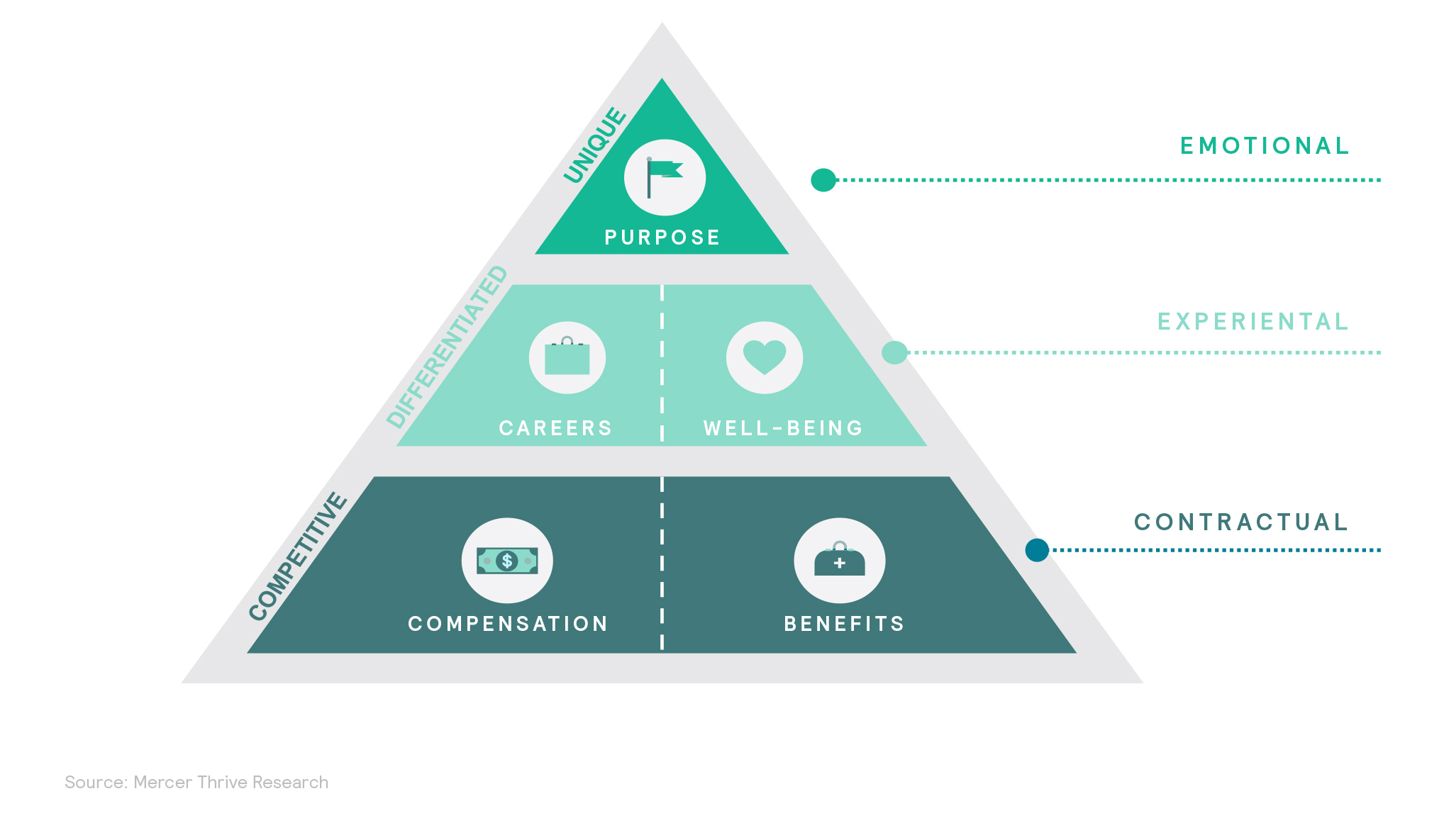The new ‘Deal’
Our new perspective of thinking about the new “deal” to enable people to thrive, positions rewards into three primary categories of the employee value proposition continuum:
- This is the traditional compensation and benefit deal.
- This is the way an employee experiences the organization both inside and outside work, from careers to well-being programs, for example.
- This is the connection created through a sense of purpose – driven by the employee’s connection to the vision or mission of the organization as well as its social responsibility initiatives. This includes not only the meaningful impact created through the organization’s products and services, but also the option to provide employees working time and resources to engage in charitable initiatives that provide personal fulfillment.
We believe that getting the contractual pieces right is the foundation for an effective rewards program and critical for remaining competitive, but differentiating on these elements can be quite costly. Where differentiation can be more engaging and cost-effective is in the career opportunities and focus on well-being of employees. There is a shift away from work-life to a new concept of well-being, a holistic notion that addresses the physical, emotional and financial health of the people.
Facebook is a good example. Facebook’s chief human resources officer defines the deal at Facebook in terms of three buckets of motivators: career, community and cause.1 When these three are fulfilled, people bring their whole selves to work and create significant economic value and impact.
Many companies are creating true uniqueness in their value proposition in the area of purpose. Our engagement research shows that this element can help to create “stickiness” with an employer and has more retentive impact than the traditional rewards elements. Research has also shown that purpose-driven organizations have greater financial success.
Here lies the next challenge. “To know what one really wants,” Mr. Maslow argued, “is a considerable psychological achievement.” Businesses and HR functions have thus far relied on anecdotal evidence, market trends and generalizations around employee segments to try and understand what people seek.




